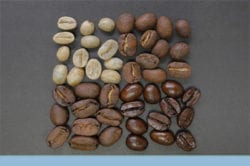
Clostridioides difficile is a gram-positive spore-forming and toxin-producing bacteria that can cause disease ranging from mild diarrhea to severe and even fatal colonic inflammation. It is spread via the fecal-oral route. This infection often occurs after antibiotic use, as antibiotics change the normal gut flora and allows this bacterium to grow and produce its toxins. It is common in hospital and long-term facility settings but is also commonly seen in the outpatient setting. C. diff infection (CDI) can produce a wide range of symptoms from mild diarrheal disease to toxic megacolon which can be fatal; early recognition and identification is key
Can range from mild to severe, with initial symptoms caused by GI interruptions and include
Infectious Diarrhea
Acute abdomen in severe disease
Irritable Bowel Syndrome
Inflammatory Bowel Disease
Celiac Disease
Note: Reserve testing for appropriate clinical setting with high clinical suspicion due to high risk of false positive results and high rates of asymptomatic carriage
Initial episode of mild disease (leukocytosis with WBC <15,000 cells/mL and Creatinine of <1.5mg/dL)
Initial episode of severe disease (leukocytosis with WBC >15,000 cells/mL and Creatinine of >1.5mg/dL)
Initial episode with fulminant disease (hypotension, shock, ileus, megacolon)
Fulminant CDI Definition (previously termed complicated C. diff infection)
Recurrent CDI
Note: NEVER use antidiarrheal drugs in CDI as this can lead to toxic megacolon | Surgery consult is needed if antibiotics fail in severe disease or in cases of complicated CDI | Consider fetal microbiota transplant if there is a third recurrence
American College of Gastroenterology: C. Difficile Infection
Infectious Disease Society of America Guideline
CDC: C. diff (Clostridioides difficile)

Please log in to ObGFirst to access this page